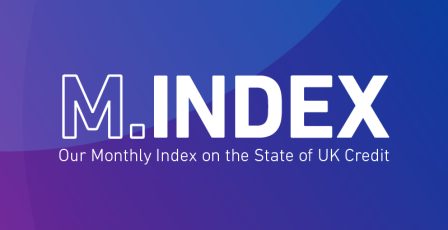Real-time customer management: A bureau view
What are the benefits of up-to-date customer data?
Management of a customers in-life credit risk profile and decisions are still typically carried out at fixed monthly points in time and don’t always reflect the most up-to-date individual circumstances. Recent innovative implementations have reduced the data latency and delivered significant returns on investment. This blog discusses the key considerations and potential impact.
Real-time customer management: What is it and why is it important?
Real-time customer management is the ability to use the most up-to-date customer data to make decisions in real-time during the lifetime of the customer. This could be a customer requesting a replacement credit card or an increased credit limit, a simple request to change an address or payment date, or it could be a request for a pre-approved loan offered within a banking app. With the growing expectation of hyper-personalisation, quick decisions and a shift towards digital banking it’s increasingly important that tailored customer actions are executed 24/7 via all relevant customer engagement channels.
What is real-time customer management?
Real-time customer management is the ability to use the most up-to-date customer data to make decisions in real-time during the lifetime of the customer.
Arguably, the greatest need for this comes from the regulatory requirement to avoid foreseeable harm, introduced via the FCA’s Consumer Duty regulation1. This naturally translates to ensuring that the most accurate and up-to-date information is used during any decision point which could influence a customer outcome. For example, not identifying a recent credit default or county court judgement prior to extending further credit to a customer could be avoided by using more up- to -date credit bureau data. There is also an increasing need to understand changes in a customer’s affordability over time and data solutions need to keep pace with the ever-evolving needs of the market.
Given the historical batch-based nature of customer management, most firms struggle to fully adopt a true real-time customer management capability. This could be due to legacy risk management systems or constraints around regularly updating customer data.
How real is real-time credit bureau data?
The term “real-time customer management” can be misleading certainly when it comes to data available from UK credit bureaux. Due to the nature of CAIS reporting, the latest data reported across the industry could already be up to 4 weeks old at the point of sharing.
Using a single monthly batch process, for example, could mean a further gap between the financial activity taking place, and data being used in decision making…. However, by using additional data sources, lenders are able to get a clearer and more up-to-date picture of a customer’s current financial position. In addition to this other vital data sources such as insolvency and county court judgement data is updated daily/weekly and could be missed if decision data isn’t updated frequently enough.
This time lag is causing lenders to invest in enhancing their customer management decisioning process by incorporating additional data sources, such as daily trigger or customer event data and open banking transaction data, which deliver a more to up to date view of their customer and their financial position.
How can up-to-date credit bureau data be adopted and what are the limitations?
In an ideal world any data that is used to influence a customer action or outcome will be the most up-to-date and accurate as possible. This could include:
- account usage data
- customer contact and engagement data
- credit performance and bureau data for credit decisions
- customer affordability data
- or open banking data, if available.
However, there are ways to combat the traditional time lag, with the following approaches common in the UK consumer lending market.
Daily triggers/event monitoring
A popular approach is to adopt a “triggers” or “event monitoring” process that provides daily event-based credit bureau data such as flagging potential indicators of financial stress such as a worsening of arrears status, or a new public information record. When adopted by lenders this allows them to exclude high risk consumers from being extended further credit, or can be used to initiate proactive communication to a consumer at risk.
Real-time bureau search
A common approach is to conduct a real-time bureau search in line with those undertaken at new lending stage. This would typically be performed when extending additional credit or performing a significant product change, where the impact of the decision is more material and is most suited to individual cases or smaller portfolios on an ad hoc basis. .
Multiple batch processing
Another option is to align credit bureau data refreshes to key decision points such as statement or payment dates. This brings the updates in line with standard monthly processing schedules, and can immediately feed into credit risk ratings and customer limit setting strategies. Consideration needs to be given to the downstream impacts of receiving data more frequently to ensure that any updates are acted upon promptly and maximum benefit is achieved.
What impact does more up-to-date data have on credit decisions?
The impact will vary considerably depending on the credit risk profile and activity of the portfolio. A prime credit card portfolio recorded a derogatory trigger rate of approximately 5% per month, with the most common event relating to a worsening of arrears status and the least common relating to bankruptcy and individual voluntary arrangement. Whilst not all of these will be directly actionable due to varying customer circumstances, it highlights the velocity of data changes and reinforces the viewpoint that this sort of up-to-date information is critical to ensuring consumers receive the correct treatment and limit the possibility of financial harm.
What does the Credit Information Market Study say about up to date credit data?
The Credit Information Market Study Final Report (CIMS)2 proposes an industry-led remedy (Remedy 4A) to allow the capture of credit performance data on a daily or weekly basis. This opens up the prospect of access to more timely bureau performance and affordability data for use in credit decisions and is a further step towards delivering better customer outcomes through use of more up to date and relevant data.
How can Experian support you to optimise your customer management decisions?
Experian already supports many credit providers with data and services to ensure good customer outcomes are achieved through optimal use of credit bureau data for customer management decisions. However, now could be the time to review existing approaches in light of Consumer Duty requirements and establish how we can help complement credit bureau data with wider data sources to help ensure good customer outcomes.
Find out more about how we can help support your business with your consumer management strategy.
Or to speak with one of our consulting team please get in touch with us.
1. Consumer Duty, Financial Conduct Authority
2. MS19/1: Credit Information Market Study, Financial Conduct Authority










